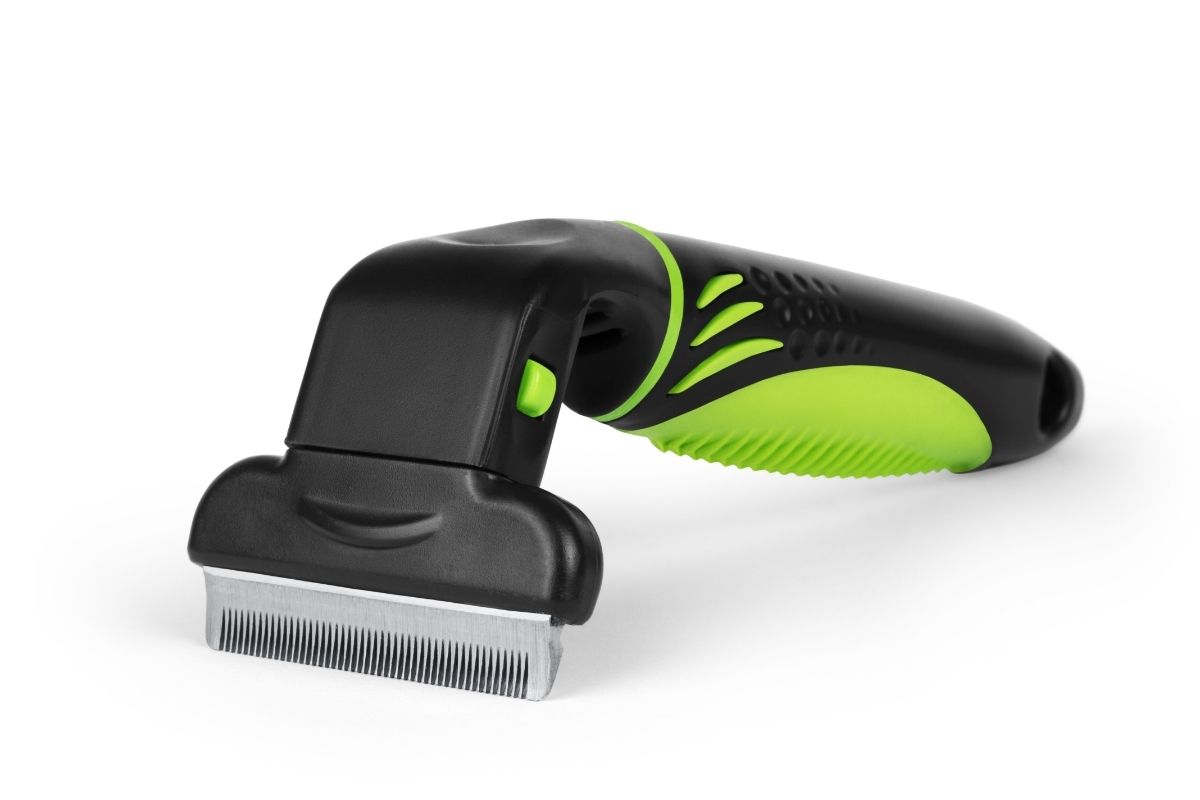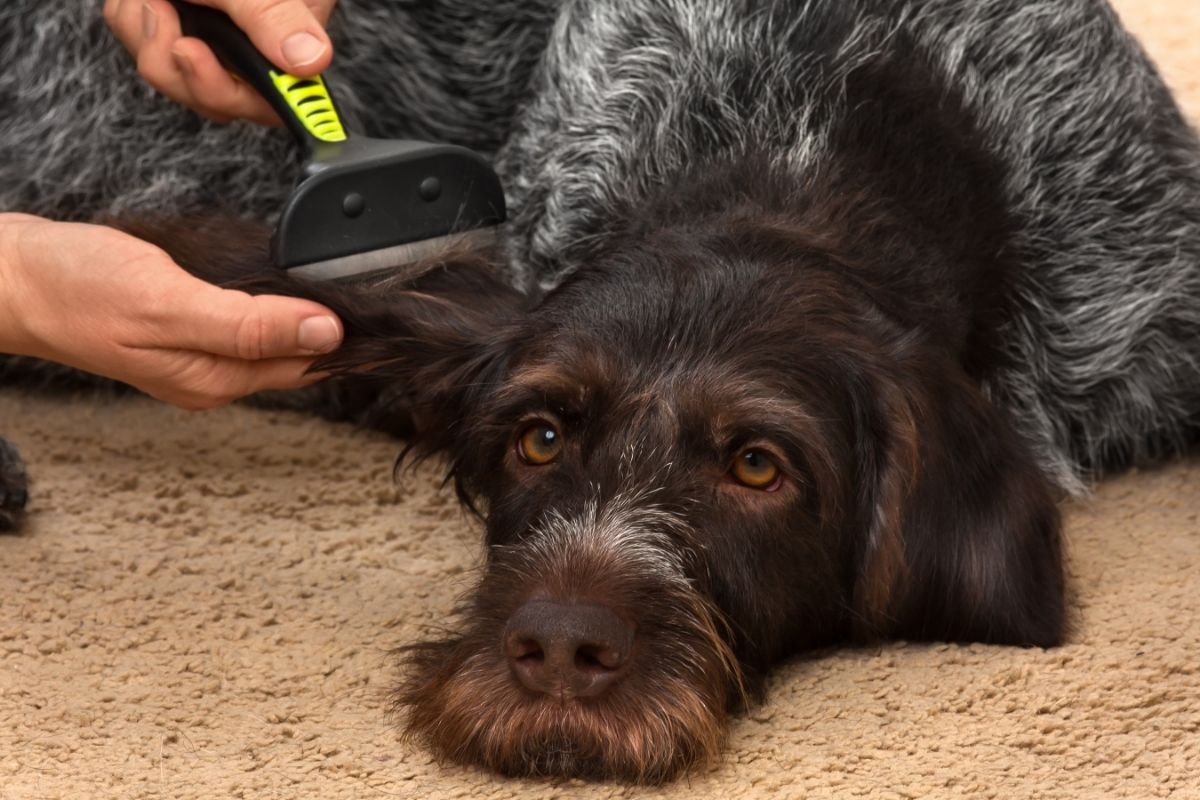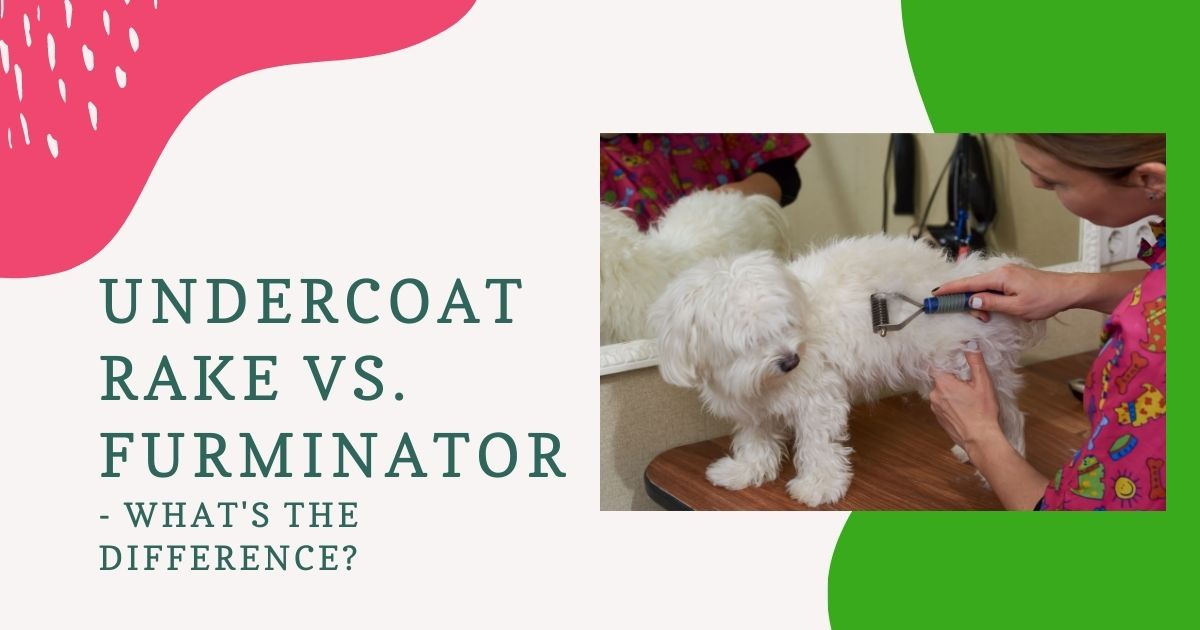The Importance of Deshedding Your Dog
De-shedding has numerous advantages for both you and your dog. When using the undercoat rake vs. the furminator, though, you must know which to utilize. The primary benefit is that it aids in the natural shedding process.
While it won’t remove all of the undercoats, it will keep your house from getting fur-covered. It also avoids uncomfortable matting and hot spots by drawing out natural oils produced by a dog’s skin and fur. It makes your dog healthier and happier in general. Shedding is a very natural occurrence for most canines.

What is an Undercoat Rake?
This gadget you use to remove dead, fluffy undercoats from shedding dog breeds in minutes while leaving the topcoat lustrous and healthy. In addition, they rapidly and readily imitate the hand-stripped look on harsh-coated canines.
The undercoat rake for dogs has many short, sharp, and curved blades. These blades help to remove the undercoat. In addition, they come in a variety of tooth widths so that you can use this instrument on several breeds.
What is a Furminator?
The furminator, as its name suggests, is a gadget that helps thin out your dog’s fur while also successfully exterminating all of their dead hair. It’s pretty popular among dog owners who have double coats and are constantly shed all year.
The furminator rake is popular with Siberian huskies and tiny huskies, labs, retrievers, and other furry dog breeds. These tools claim to minimize shedding by up to 90%! While you can’t stop your husky from shedding, you can easily remove the hairs that they have cleared from their skin.
You could comb it out, but nothing beats the furminator rake when it comes to speed and effectiveness. It will also significantly lessen the likelihood of uncomfortable mats and tangles forming beneath the topcoat.

How to Use an Undercoat Rake
If you want to learn how to groom a dog with an undercoat, the following instructions will walk you through the process from beginning to end:
- Begin by brushing the dog’s coat with a de-matting grooming rake. The blades on these rakes are ideal for cutting through matted pieces of fur, particularly those in the undercoat. When the rake detects resistance, the edges activate. In other words, if the hair isn’t matted, the rake won’t cut it. To ensure that all mats are eliminated, run the rake over the dog’s entire body.
- After that, use a shedding rake or a dog undercoat rake to brush your dog. Make sure you brush your dog’s fur in the same way it grows. This implies you should work your way from head to tail, using small six-inch (fifteen centimeters) strokes. Begin from the very top of the dog and work your way down. The brush will come back clean once you’ve eliminated all loose fur. As fur accumulates, clean the grooming rake regularly.
- Place huge cotton balls in the openings of both ears to protect them from water.
- Place your dog in the bathtub or sink. After that, you’ll start saturating the dog’s fur with lukewarm water.
- In the palm of your hands, place a coin-sized amount of dog shampoo and rub your palms together. Working the shampoo into the dog’s skin and coat until it begins to lather is the next step.
- Using warm water, thoroughly rinse the dog. Rinse out all traces of soap; the water should run clear once all suds are out.
- After removing the cotton balls from his ears, towel dry your dog’s fur.
- After that, brush the dog’s coat once more using a boar bristle brush. This will smooth out the coat and get rid of any remaining tangles.
- Allow the dog’s coat to air dry. Then, brush the skin one more time with the undercoat rake once your dog is dehydrated. This will aid in the removal of any leftover loose undercoat fur.
- To eliminate any leftover fur and smooth the coat, brush the dog with the boar bristle brush.
You must keep your dog’s undercoat groomed now that you’ve given him thorough grooming. Brushing your dog daily makes this easier. It’s also a good idea to use the comb to go over the undercoat once a day and the boar bristle brush to increase the coat’s gloss by correctly spreading the oils.
When learning how to groom a dog, you’ll find that the boar bristle brush is an excellent tool to have if you don’t want to use scissors to remove mats out of the fur. On the other hand, the boar bristle brush will help if you use it to teach and brush tangles out gently.
It’s best to start from the tip and work your way down to the root. This procedure can be painful and time-consuming, so make sure you prepare correctly before beginning. If you have a sink with a hose or a shower with a removable shower head, grooming a dog with an undercoat is considerably more manageable.
If you don’t have one, you may still groom your dog at home by rinsing the soap off with a small pail or cup during the bathing process. It doesn’t matter what tool you use to remove the soap from the dog’s fur; the critical thing is that you get rid of all of it. If you don’t remove all traces of soap, your dog may develop an allergic response or develop itchy skin.
Finally, this instruction should have taught you how to groom a dog with an undercoat. You cannot go wrong if you follow our straightforward step-by-step instructions. What you’ll receive is a dog with a shiny, smooth coat that looks healthy!
How do You Use a Furminator?
Let’s figure out how to use the furminator safely and successfully on your dog now that we know what it is:
- To begin, set your furminator schedule: ideally, you should have no more than two sessions every week, each lasting 10 to 20 minutes. During shedding seasons, the time required to fully ‘furminate’ your pup’s coat may increase.
- Grooming is probably not something your dog enjoys; therefore, it’s up to you to make it as pleasurable as possible for them, so they don’t avoid it the next time.
- Bring some treats, lots of praise, and lots of love!
- Make sure your husky’s coat is completely dry and that their hair is free of mats or tangles.
- Brush the hair using a dog hair rake in the same direction as it grows, from head to tail, with long strokes. Avoid brushing your dog’s skin if he has any cuts.
- Use delicate strokes and don’t use too much pressure – the furminator is already penetrative enough.
- You can use the furminator rake on the ears and tail, but be careful because they are delicate areas. The tummy and legs are in the same boat.
- You’ll probably be able to remove a lot of hair from your dog, so make sure you remove it from the brush as you go.
- After each use, clean the furminator with warm water and mild soap, then dry it and store it in the protective edge cover.

Conclusion
If you have a long-haired or double-coated dog, you’re probably used to vacuuming your home every day to keep it fur-free. Investing in the best undercoat rake or fuminator can save you a lot of time and effort. A high-quality de-shedding tool can remove up to 95% of your dog’s loose fur, making it an essential grooming item during excessive shedding periods.
The furminator is one of the best de-shedding tools. It is available in five sizes to fit dogs of all breeds. There’s also a convenient self-cleaning mechanism, so you don’t have to remove the fur from the tool manually every time you use it.
Although the furminator isn’t the cheapest de-shedding rake for dogs on the market, it’s the most popular device in its category due to its high-quality design, durability, and ease of use, which is why it’s our top pick. So why not place your order for a de-shedding brush right now? And you can finally say goodbye to everyday vacuuming!



